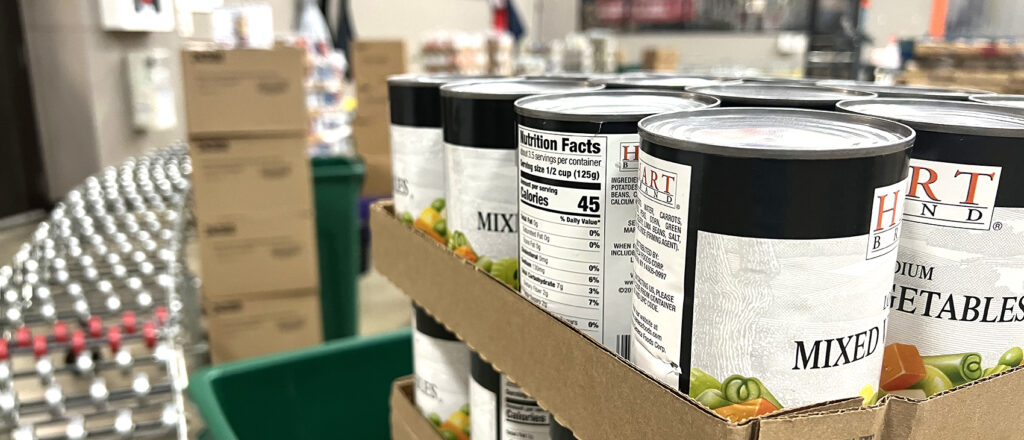Hunger Facts & Stats
One key to ending food insecurity is better educating ourselves and one another about the nature of need and the reality of those who find themselves struggling to provide for their household’s basic needs.
Not everyone simply needs food. Not everyone in need is simply underemployed.
There are some common misconceptions that persist around the subject of need and the nature of food insecurity. These misunderstandings can create obstacles to helping our neighbors out of the challenging circumstances that they may find themselves in. Fortunately, we’ve learned a lot of helpful information that is allowing us to really make a difference in the lives of those we serve in the bi-state area.
The bottom line is that while hunger can affect anyone, anyone can affect hunger. Often, the first step in having a positive impact, is understanding.
Hunger in Missouri and Illinois
In 2021, the University of Missouri Interdisciplinary Center for Food Security conducted Food Assistance and Hunger in the Heartland 2021. This study aimed to better understand the characteristics of food pantries and food pantry clients across the 26 counties served by the St. Louis Area Foodbank. Below are some of the key findings offered in that report.
Which would you choose to go without?
ONE in every SEVEN people in Eastern Missouri and Southwestern Illinois face hunger. Putting food on the table for their families often creates a tough choice: A meal or electricity, a meal or medication, a meal or gas for the car.
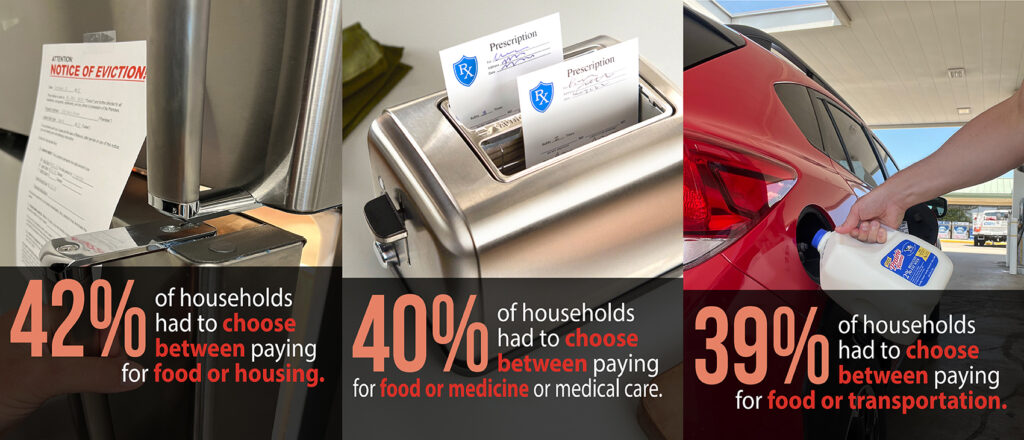
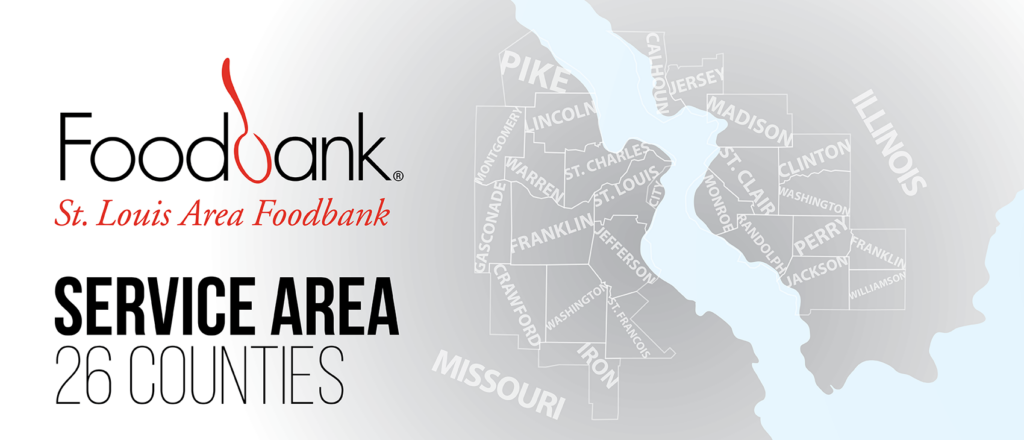
- 40% of those we served have to choose between paying for food or medical care.
- 53% have to make a choice to feed their family or pay their utility bills.
- 39% make the difficult decision between putting fuel in their cars to get to work and putting food on the table.
- 18% of the people we serve are veterans. These individuals sacrificed so much and now struggle to ensure their own needs are met.
- 42% of those we serve have to choose between paying for food or housing.
- 1 in 7 people in the bi-state region are in need of food assistance.
- 1 in 5 children in the bi-state region are in need of food assistance.
- 52% identify as white.
- 54% of households make less than $15,000 per year.
- 18% of households have someone who previously served in the military.
- 84% of households have a person with a high school diploma or higher level of education.
- 25% of households have one member who is working full-time.
- 49% of households have at least one working adult.
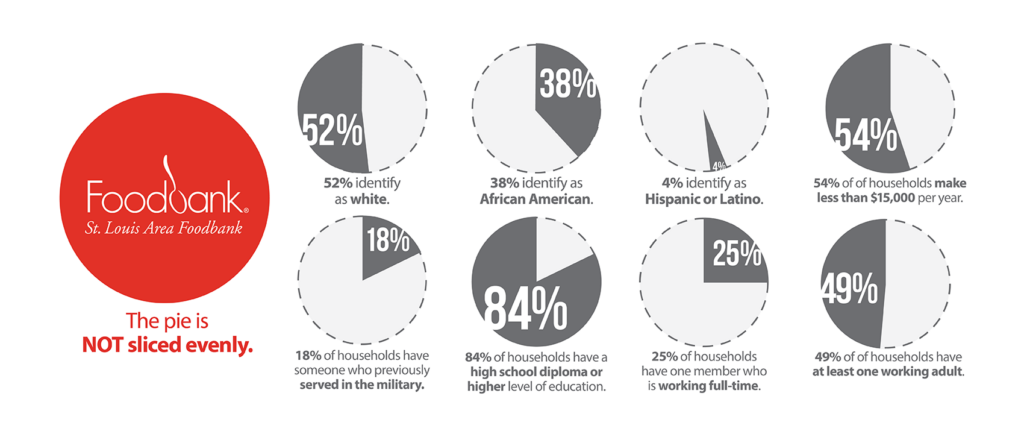
Recent Trends
The St. Louis Area Foodbank is not immune to the impact of our current economic challenges. We are facing reduced donations of food as our partners are dealing with increased costs and supply chain issues as well as increased costs for transportation and cost of goods. Compared to November 2021, the Foodbank is challenged with the following:
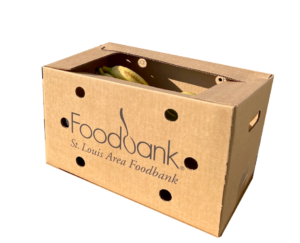
- The amount of food we distributed is up 11%.
- The cost of procuring food to ensure we are able to feed the need is up 144%.
- Food donations are down 16%.
- Our Food Drive donations are down 20%.
- Our number of food drives is up 47%.
- Credit card fees (many of our financial donations are given via card) are up 195%.
- Fuel costs for our delivery fleet are up 34%.
- Leasing expenses for our delivery fleet are up 22%.
